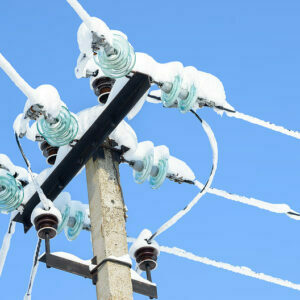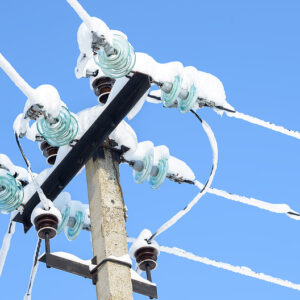Biden Wants to Quit Coal, but PA Power Grid Still Needs It, Experts Say

“We’re going to be shutting these plants down all across America.”
That was President Joe Biden’s bold pledge late last year regarding coal plants nationwide. Speaking at an event in California in November, the president vowed that “coal-fired electric” plants would be shuttered en masse in favor of “wind and solar.”
“No one is building new coal plants because they can’t rely on it, even if they have all the coal guaranteed for the rest of their existence of the plant,” he said at the time.
But the latest data tell a different story. Modern economies like the U.S. and Europe aren’t ready to walk away from coal quite yet. In fact, 2022 set a global record for coal generation, and America just experienced a surge in coal-powered energy. While federal data indicate coal consumption peaked in the U.S. about 15 years ago and has been declining since it rose in 2021 for the first time since 2013.
In Pennsylvania, coal continues to play an outsized role in both local and national electricity generation. The Pennsylvania Coal Alliance says that in 2019, coal “accounted for 17 percent of the power generated in Pennsylvania, 24 percent of the power generated in the PJM Interconnection, and 23 percent of the power generated nationally.” Pennsylvania coal exports doubled from 2016-2019, the Alliance said.
Pennsylvania produced 42,460 tons of coal in 2021. Coal demand has spiked worldwide as natural gas prices have risen and supply declined. U.S. production rose 7.8 percent in 2021, and about 40,000 Americans work at domestic coal mines, according to the U.S. Energy Information Administration.
“Most people talk about coal in the past tense, as if it’s no longer relevant to energy generation,” said Neil Chatterjee, a former commissioner and chairman of the Federal Energy Regulatory Commission. “It’s still a fifth of all power generation.”
Chatterjee sees renewable energy production rising, but he says coal will remain a major source of electricity in the U.S. in the near future.
The numbers back him up. The Energy Information Association estimates coal comprises nearly 22 percent of U.S. “utility-scale electricity generation.” That’s down from around 50 percent a generation ago, but it’s still more than wind and solar combined (14.8 percent).
Experts and industry movers argue the path away from coal and toward next-generation energy production is not as simple as Biden appeared to suggest and that coal itself will continue playing a decisive role in the U.S. energy grid for at least the near future.
Renewable advocates are still confident in green energy’s potential. Gregory Wetstone, the president and CEO of the American Council of Renewable Energies, argues the U.S. power grid “can get to 80-90 percent generation from renewables with technology readily available today.”
“We cannot continue to rely on a transmission infrastructure designed to access coal seams in the 40s and 50s,” Wetstone said. “The economics work; the technology is there. It’s only a question of time.”
Wetstone pointed out that dozens of states have set ambitious goals for switching to some or all of their electrical generation coming from renewables.
“Those goals have been in place for many years, and states have been evolving and going for more and more ambitious renewable targets,” he said. “We don’t have any cases of states stepping back and saying, ‘We were going too fast.’”
The real question, say people watching the grid, is whether renewables can develop fast enough, particularly regarding reliability. Coal plants are, at present, often the reliability anchor on America’s energy grid, the backup when wind and solar power aren’t available.
Just last year, the North American Electric Reliability Corporation (NERC) warned parts of the American West and the Great Lakes region faced an “elevated risk” of rolling brownouts due to a lack of reliable energy reserves. According to NERC, the loss of baseload generation from coal and nuclear plants put the grid’s reliability at risk.
That’s yet another reason, says Conor Bernstein with the National Mining Association, that coal “is essential to the affordability and the reliability of our power supply.”
“The nation desperately needs a hardy dose of energy policy pragmatism that pumps the brakes on the EPA’s runaway regulatory agenda and recognizes the immense challenges of integrating ever-increasing amounts of intermittent power,” Bernstein said. “We should be building on the shoulders of the energy infrastructure and systems we have today, not tearing them down in the hope that yet-to-be-built or proven alternatives can take their place.”
The long-term outlook is still a shift toward renewables. Chatterjee said solar will likely be the most productive next-gen energy technology in the years ahead.
“We need a breakthrough in long-duration energy storage to get there,” he said. “But I think if we get there—which I do believe will come—I believe that combination [of solar plus storage] will be potent. Solar is ready to take off.”
And even when it does, says West Virginia University’s Syd S. Peng, America will still rely on coal, at least in part.
“To underpin grid reliability, coal must be part of a diverse mix of dispatchable fuels capable of providing a bridge to the future until renewables can supply enough power to meet electricity demand,” Peng said.
Please follow DVJournal on social media: Twitter@DVJournal or Facebook.com/DelawareValleyJournal






